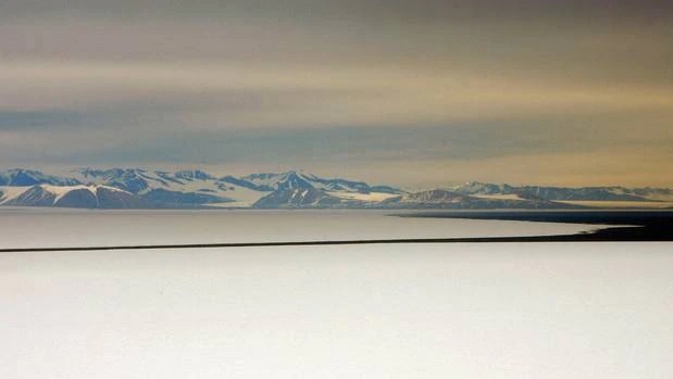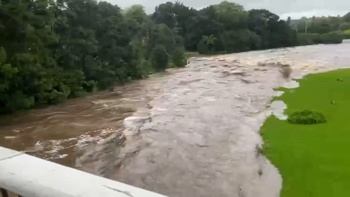
Kiwi scientists have untangled the complex reason why part of the world's largest ice shelf is melting away 10 times more quickly than the rest of it.
Their just-published study has widened what we understand about ice shelves and the processes that force them to shed water – which will only become more severe under climate change.
In this case, Niwa marine physicists Dr Stewart and Dr Mike Williams, with UK collaborators, focused on the north-western corner of Antarctica's Ross Ice Shelf which, at more than 500,000 sq km, stretched to the size of France.
"We've shown that the ocean is melting the north-western corner of the Ross Ice Shelf much faster than the rest of the shelf, and a lot of that melting is linked to summer heat from the top layer of the ocean," Stewart said.
The finding was important because the stability of ice shelves was generally thought to be related to their exposure to warm deep ocean water.
However, the new study showed heat at the surface of the ocean also played a crucial role.
Although the interactions between ice and ocean occurring hundreds of metres below the surface of ice shelves seem remote, they have a direct impact on long-term sea level.
Floating ice shelves stabilised the parent ice sheet, and loss of the major ice shelves would lead to accelerating ice flow and sea-level rise of several metres or more.
Currently the largest ice shelves were melting slowly; but smaller ice shelves that floated in seawater just 3C above the freezing point were melting 100 to 200 times faster, showing the impact that warm ocean water could have.
The team, including scientists from Cambridge University and the British Antarctic Survey, collected four years of data from an oceanographic mooring installed under the Ross Ice Shelf with instruments measuring temperature, salinity and currents.
The mooring also included an echo-sounder pointed upwards at the bottom of the ice to measure melt rates.
Installing the mooring required drilling a hole through 260m of ice and then lowering it into 600m of ocean beneath the shelf.
In addition, the team used extremely sensitive custom-made radars to survey the changing thickness of the ice shelf. Stewart measured melt rates during two Antarctic field seasons.
"We were able to generate a map of the melt rates using incredibly precise measurements," Stewart said.
Information from the instruments deployed on the mooring showed that warm water from the upper layer of the open sea transports heat into the cavity under the ice shelf causing melt rates to nearly triple during summer.
The melting was affected by a large ocean expanse in front of the Ross Sea Ice Shelf devoid of sea ice due to strong offshore winds.
This area, known as the Ross Sea Polynya, absorbed solar heat quickly in summer and in turn influences the ice shelf cavity.
The findings were significant for several reasons.
Firstly, they suggested that conditions in the ice shelf cavity were more closely coupled with the surface ocean and atmosphere than previously assumed
This implied that melt rates near the ice front would respond quickly to changes in surface climate.
While this process had been happening for a long time, Williams believed it could change.
"Climate change is likely to result in less sea ice, and higher surface ocean temperatures in the Ross Sea, suggesting that melt rates in this region will increase in the future," he said.
"This study builds our understanding of the important but rarely observed processes that drive melting of ice shelves.
"Understanding and monitoring these processes is critical to predicting the future of the ice sheet and global sea level."
Take your Radio, Podcasts and Music with you









